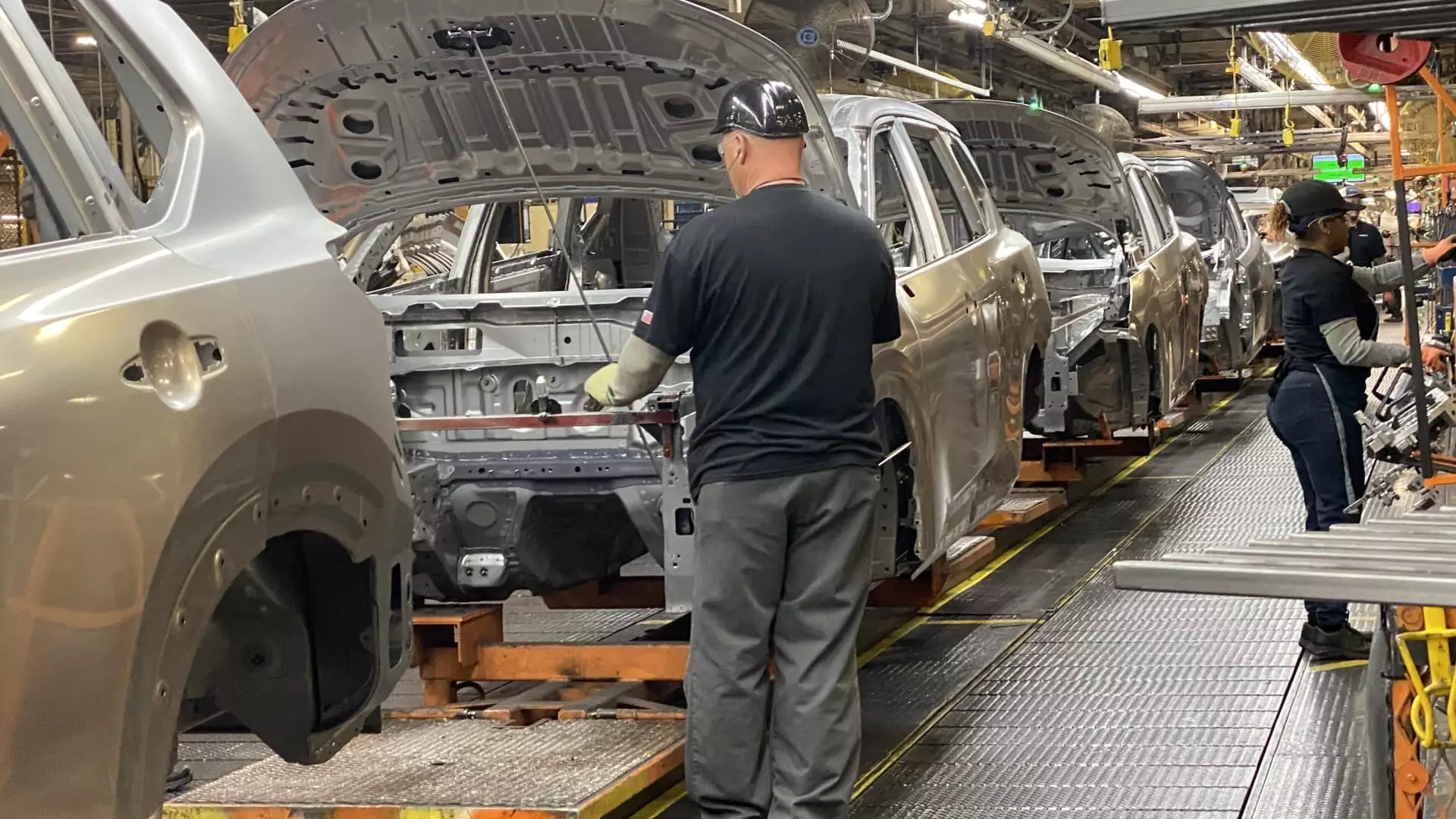The ongoing effects of President Donald Trump’s 25% tariffs on imported vehicles have begun to unfold like a slow-motion car crash, revealing the significant vulnerabilities and profound complexities of the automotive industry. Analysts forecast dire consequences—millions fewer vehicles sold, skyrocketing vehicle prices, and an astronomical increase in overall costs exceeding $100 billion. This is more than just a monetary setback; it’s a fundamental shift that could leave a long-lasting scar on the landscape of the industry, one that resonates far and wide.
As Felix Stellmaszek of the Boston Consulting Group noted, this year could potentially mark the most pivotal moment for the automotive sector. The analysis he provides highlights a paradigm shift, driven by policy changes that compel automakers to rethink their production strategies comprehensively. This is a critical moment that demands stakeholders in the industry to reassess their business models and their reliance on traditional practices that may no longer be sustainable.
Unmasking the Financial Fallout
The financial implications of these tariffs are staggering. Estimates from the Center for Automotive Research suggest U.S. automakers will face over $107.7 billion in added burdens, with nearly $41.9 billion affecting the major Detroit auto manufacturers: General Motors, Ford, and Stellantis. Such numbers are not just abstract figures; they translate directly into increased consumer prices and diminished market accessibility. Goldman Sachs estimates that new vehicle prices in the U.S. could climb by an alarming $2,000 to $4,000 within the next year, creating an insurmountable barrier for many potential buyers.
One cannot overlook the additional pressure placed on consumers who are already wrestling with inflationary pressures across the board. A recent University of Michigan survey revealed consumer sentiment spiraling downwards, reflecting sky-high inflation levels that haven’t been seen since 1981. The combination of these tariffs and rampant inflation creates a perfect storm, one that threatens to cripple not just the automotive market but also the wider economy. People simply cannot afford new cars when the average price hovers around $50,000, compounded by rising financing costs that can exceed 9.64%.
Sacrificing Affordability
Affordability has long been an issue for American consumers, but this tariff-driven spike in vehicle prices will further exacerbate the problem. As these costs flow downstream, the ripple effects will be felt across various sectors, limiting consumers’ spending power and, by extension, their overall economic mobility. With many families already struggling to make ends meet, the looming increase in vehicle prices manifests as a real threat to the American way of life.
Jonathon Smoke, Chief Economist with Cox Automotive, predicts that the ongoing tariffs will trigger a diminishing support system—consumers could see fewer discounts and more price hikes as automakers attempt to recuperate losses. This raises a troubling question: what happens when the average consumer can no longer afford the very vehicles they depend on for transportation? The result may not only be stalled sales but also stagnated economic growth.
Manufacturers in a Tight Spot
Automakers find themselves in dire straits. Some, like Ford and Stellantis, have temporarily resorted to special employee pricing deals to offset the damage, while others like Jaguar Land Rover have curtailed U.S. shipments altogether. This patchwork of responses underscores a troubling reality: manufacturers are scrambling to adapt, and the chaos induced by tariffs has left them no clear path forward.
Indeed, Telemetry’s Sam Abuelsamid provided a sobering forecast that suggests we could witness a decrease of around 2 million annual vehicle sales in the U.S. and Canadian markets. What are the broader implications of this reduction? It goes beyond the immediate economic concern—it highlights the fragility of global supply chains and may compel companies to look more extensively at localized production. The question remains: will these reforms prove beneficial in the long term, or are they merely band-aids on a gaping wound?
Consumer Sentiment in the Balance
As automakers grapple with tariffs and struggling consumer sentiment, the very foundation of the automotive market appears shaky. There are too many unknowns that complicate the current landscape. Will consumer demand fall as prices rise, or will buyers continue to purchase new vehicles, albeit reluctantly?
One thing is clear: the tariffs imposed by Trump’s administration have unravelled a delicate ecosystem, pushing manufacturers, dealers, and buyers to a breaking point, creating a market fraught with uncertainty. The trends we are witnessing today lay the groundwork for an uncertain future, as vehicle affordability and consumer choice hang in the balance. Changes are not merely inevitable—they are the harsh reality that the automotive industry must confront lest it veer into deeper turmoil.

